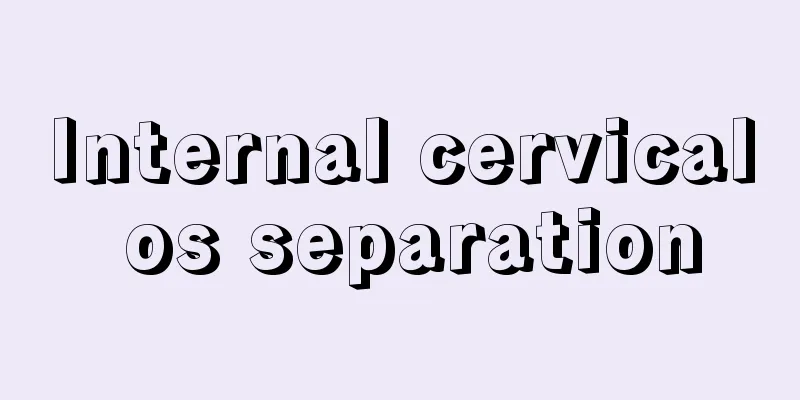Internal cervical os separation

|
Internal cervical os separation is a problem that many women have. This problem will have a serious impact on the health of women's private parts and may even directly affect their reproductive function. Therefore, if you have symptoms of internal cervical os separation, you must discover and treat it in time to restore your reproductive system to normal health. Next, I will introduce to you the dangers of internal cervical os separation! 1. Cervical dysplasia May be associated with uterine hypoplasia. A severely dysplastic cervix is elongated. The ratio of cervical length to uterine body in moderately hypoplastic uterus is 1:1, which is the so-called adolescent uterus. Cervical dysplasia can lead to insufficient secretory function of cervical glands. 2. Endocervical atresia and stenosis Congenital cervical atresia or stenosis is mostly caused by incomplete formation and fusion of the lower segments of the bilateral Müllerian ducts. It is rare clinically and is often accompanied by uterine hypoplasia, while secondary sexual characteristics mostly develop normally. If the patient's endometrium functions well, she may experience periodic lower abdominal pain or scanty menstruation with dysmenorrhea during adolescence due to blood accumulation in the uterine cavity. Menstrual blood may also flow back into the abdominal cavity through the fallopian tubes, causing pelvic endometriosis. 3. Abnormal position of the cervical canal is often accompanied by abnormal position of the uterine body Chronic pelvic inflammatory disease or endometriosis can cause the uterus to be extremely retroverted, retroflexed or anteflexed, causing the external cervical os to stick to the anterior fornix, causing the posterior fornix to become shallow and lose its function as a sperm storage pool, which is not conducive to the upward movement of sperm. In addition, cervical elongation, shortening or cervical prolapse may also change the normal positional relationship between the external cervical os and the posterior fornix, hindering the upward movement of sperm. 4. Cervical fibroids The main cause of infertility caused by cervical fibroids is deformation and narrowing of the cervical canal, which affects the passage of sperm. The main clinical manifestations are irregular menstruation, increased menstrual blood volume, increased leucorrhea or bladder and rectal symptoms. Some patients have no symptoms. Gynecological examination may reveal protruding myoma nodules in the cervix or changes in the shape of the cervix. The cervix on the side where the myoma is located is enlarged, while the opposite side is compressed and thinned, and the external os of the cervix is stretched and flattened into a twist shape. |
<<: Is it painful for women to have IVF?
>>: How to restore relaxation of the internal cervix
Recommend
Why not play with your phone as soon as you open your eyes?
You may have heard many people say “Don’t use you...
Why does my belly drop when I'm eight months pregnant?
Many pregnant women have abnormal symptoms, so th...
Is it normal for a 10 year old girl to have discharge?
It is normal for women to have secretions, mainly...
Black blood clots in menstruation after the Qing Dynasty
If you do not take necessary contraceptive measur...
Maintenance methods for fifty-year-old women
When it comes to skin care, you must choose a goo...
Is 35.3 degrees normal for a woman?
The standard value is different depending on the ...
How many days does it take for colposcopy to produce results?
The intravaginal optical microscope is a medical ...
What should I eat on the first day after giving birth? What should I pay attention to on the first day after giving birth?
We all know that pregnant mothers are weak after ...
Why does the vaginal discharge smell fishy?
Diseases of the sexual reproductive system are gy...
How to exercise for uterine prolapse
Many women gradually experience uterine prolapse ...
What medicine should girls take for infection below
If a girl has an infection down there, she should...
Bleeding from cervical polyps
Cervical polyps are a relatively serious disease,...
Can a virgin be infected with HPV?
HPV virus is a disease related to cervical cancer...
Scientific schedule for pregnant women
Pregnancy is a unique process for women. During p...
What is the cause of waist pain in women?
For men and women, due to the significant differe...









